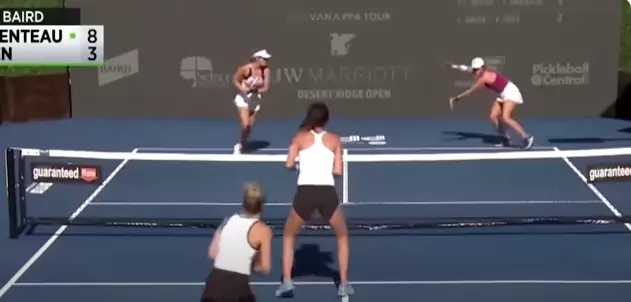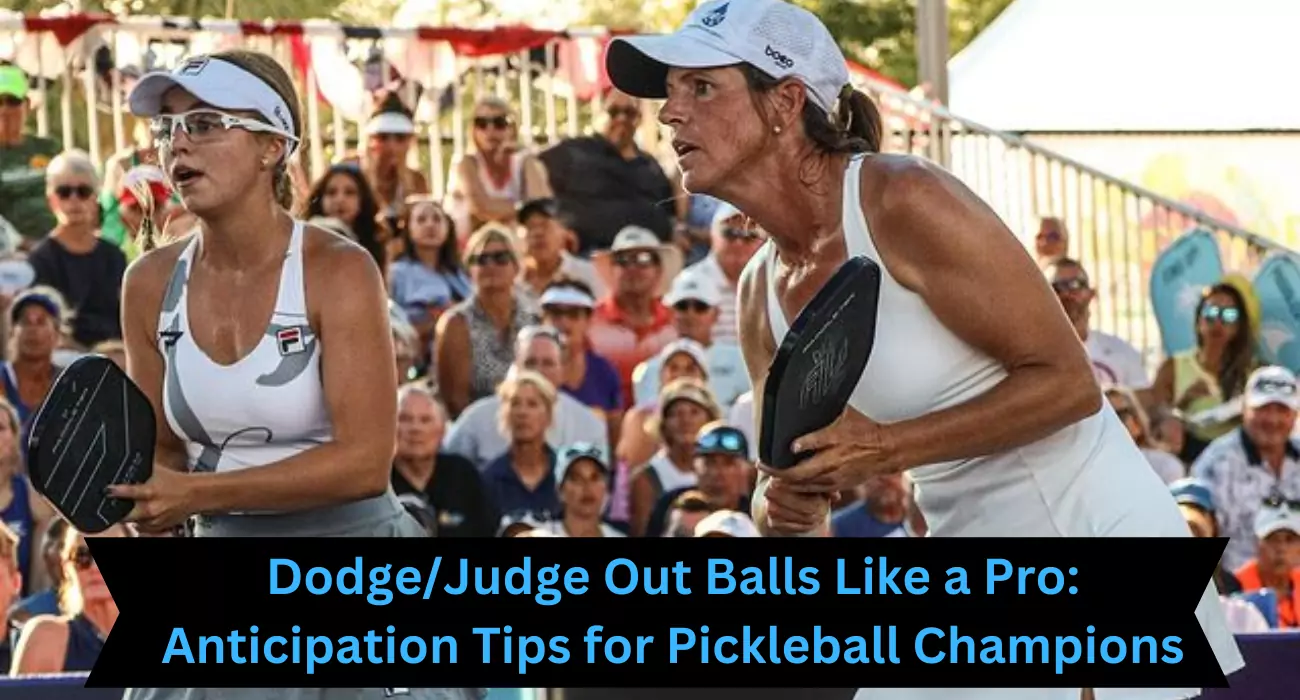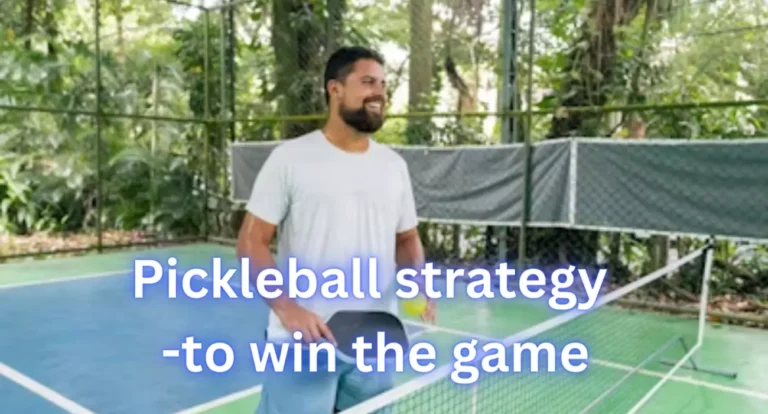Dodging out balls in pickleball is an important skill, but it takes practice and anticipation to master. Master the court! Learn how to read your opponent and dodge out balls with confidence. Improve your reflexes and reaction time, and win more games with these essential pickleball strategies.
Anticipate the Ball: Don’t Wait for it to be Hit
Most players make a common mistake by waiting for the ball to be hit before deciding whether it’s in or out. This approach is too passive and often too late. With only half a second to react to a drive, it’s essential to be proactive and look for early signs to anticipate the ball’s trajectory.
Here are some things you want to look for when judging whether or not someone is about to hit the snot out of the ball:
- A big backswing
- Turned hips and feet
- A paddle pause
A big backswing
A large backswing in pickleball is often a giveaway that a drive is incoming. If your opponent’s paddle goes behind their body, it’s a strong indication that a drive is coming. Even if they change their mind and drop the ball instead, you’ll have ample time to react.
Judging the Trajectory of the Drive
As the drive approaches the net, observe whether it’s rising or falling. If it’s still growing, it’s likely to be an overhit and go out. If it’s falling, be prepared to counter, as it may have topspin.
Pay attention to how low the ball was to the ground when your opponent struck it. If it barely bounced, it’s likely to continue rising. If it bounced high, your opponent may have added topspin, making it more challenging to return.
Turned hips and feet: Body Positioning
When your opponent positions their body with one foot significantly in front of the other and their hips or chest facing the sideline, it’s a strong indication that a drive is coming. This stance is a clear giveaway that they’re preparing to unleash a powerful shot.
Recognize and React
As soon as you notice your opponent in this position, mentally prepare yourself to dodge if the ball is chest-high or above. Don’t wait for the ball to be hit – anticipate the drive and get ready to react.

Look at Catherine Parenteau’s stance in the image – her body is turned almost completely to the sideline, signaling a drive with absolute certainty. There’s no chance she’s dropping the ball in this position; it’s a drive all the way. By recognizing this tell, you can gain a split-second advantage and prepare your response.
A paddle pause: Identifying the Speedup
Besides dodging drives, it’s essential to recognize speedups that can carry out of bounds. One key indicator that your opponent is about to speed up the ball is a slight pause or hold of their paddle right before contact. This brief hesitation is a mechanical glitch that can give away their intention.
Recognizing the Pause

As seen in the image of pickleball pro anna leigh water, this pause is a subtle but telling sign. While it may not always guarantee a speedup against amateur players, it’s a strong indication. Even if some advanced players try to deceive you with a fake pause, most players will not be that sophisticated.
Preparing for the Speedup
After a dink, if you notice a player setting their paddle down early and then pausing, get ready for a speedup. By anticipating this, you can let high shots go out of bounds and counter those within your reach. If they deceive you with a dink instead, you’ll have ample time to recover.
Key Take Aways
Remember, dodging out balls is a skill that takes time and practice. Be patient, keep these tips in mind, and you’ll be dodging out balls like a pro in no time.
Reading Your Opponent
- Body Language: Look for signs your opponent is about to hit hard. This could include a big backswing, turned hips and feet, a pause before hitting the ball, or a more focused expression with narrowed eyes.
- Shot Selection: Consider the situation. If your opponent is far back or scrambling, they’re less likely to hit a powerful shot. On the other hand, if they have an easy setup for a drive, they might be aiming to hit it out.
- Communicate with your partner: Call out “mine” or “yours” to avoid confusion and ensure you’re not both trying to dodge the same ball.
- Stay light on your feet: Keep your feet moving and be prepared to change direction quickly.
- Practice, practice, practice: The more you play, the better you’ll become at judging and dodging out balls in pickleball.
Ball Trajectory
- Height: Your opponent’s high contact point on the ball suggests the shot might rise and potentially go out.
- Distance: The closer your opponent is to the net, the less power they can put on the ball, reducing the chance of an out-of-bounds shot.
Making the Move
- Decision Point: Set a limit for yourself, like chest or shoulder height, where if the ball goes above that level, you’ll move out of the way.
- Footwork: Practice a quick shuffle to dodge the ball while staying in position to return a good shot. Don’t get caught flat-footed.
- It’s Okay to Let It Go: Focus on protecting yourself and the middle of the court. Letting a potential out ball go is better than getting hurt trying to return it.



